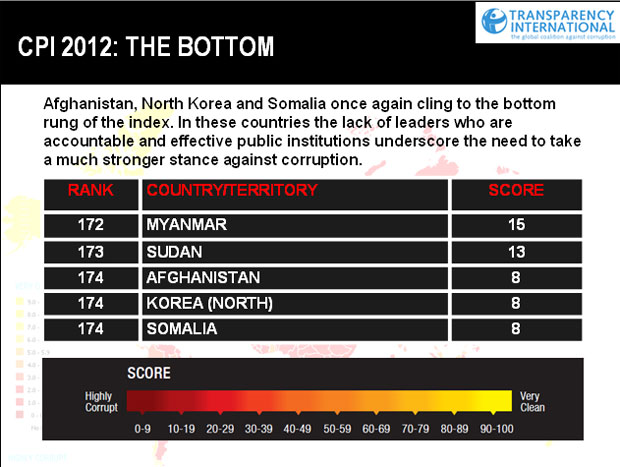In my last post, I discussed corruption in the African country of Senegal, and the effect that the administration’s financial mismanagement had on donations in aid to the country.
This installment will cover a large sum of money pledged back in 2012 at a conference in Tokyo. Roughly $16 billion USD were promised to a Middle Eastern country plagued by conflict and turmoil, a nation rated the worst on the Transparency International Corruption index. Eighty countries and international organizations joined together to pledge billions of dollars to the volatile government of Afghanistan.
In 2012, the Tokyo Conference on Afghanistan was held to discuss the future of the Middle Eastern nation. During the international rendezvous, $16 billion USD were pledged to help the volatile country begin to recover from conflict. The welfare of Afghanistan’s people was a high priority to the world at large, prompting the conference to take place. The proposal agreed upon at the summit set up a plan to donate a portion of the money each year up until 2015.

Officials in Afghanistan were not convinced that the amount pledged would be sufficient to meet the needs of their nation. According to the Afghan central bank, at least $6 billion USD were needed each year to foster economic growth in the region. The agreed upon amount fell a bit short of the Afghan expectations. Back in 2008 at a similar conference in Paris, Afghanistan requested roughly $50 billion USD for the next five years. The nation was not satisfied with the result in France then, and they were not happy with the amount pledged in Tokyo in 2012.
Nonetheless, the majority of the aid money that was pledged “disappeared” as soon as it was turned over to Afghanistan. As is common with cases of corruption, there is no concrete way to determine exactly where the money goes without implementing a security program. According to treasury officials in Afghanistan, the central bank is a “hostile environment,”, and when asked why there was no security program in place for the funds, the response from officials was that Afghans felt the programs were “too difficult to implement.” Anthony Cordesman, a chair holder of the Center for Strategic and International Studies wrote about the donations to Afghanistan in the past. “The lack of transparency and credibility has been a critical problem … particularly in the almost total lack of credibility in reporting on the impact of aid, quality and integrity of governance and presence of a functioning justice system.”
In 2012, when the funds were first being allocated to the Afghan central bank, “half of Afghan citizens paid a bribe while requesting a public service and nearly 30% of them paid a bribe for a private sector service.” This is a government that exploited citizens and forced them to pay bribes for general services all during a time where money was being poured into the country. Afghanistan’s own President Hamid Karzai was quoted reporting that government corruption was at a level “not ever seen before in Afghanistan.”
The nation’s economy is heavily supported by an illicit opium trade, supplying money to insurgents and criminal groups. Election fraud and bribery have become the norm during the democratic process. Even the education sector is corrupt, with 51% of teachers accepting bribes in 2012. The huge sums of money in aid that have gone “missing” do not help the situation either, as U.S. officials have struggled to keep track of monetary donations due to negligence and lack of cooperation from Afghan officials.

Despite the lack of transparency, the rampant corruption in almost every sector of the government, and the billions of dollars in aid that has gone missing, large donations are still being made to Afghanistan today. When looking at these monetary pledges, a pattern begins to form. Countries that are rated poorly on the Transparency International corruption index seem to garner the most interest. Unfortunately, the countries that need aid the most appear to be the most corrupt. The clear disadvantages of donating money to corrupt nations seems to be overlooked by many modern nations, even if that aid is being wasted. While it is overwhelmingly agreed upon that Afghanistan needs financial aid to help its people, the method of distributing this money leaves much to be desired. Once again, donations prove ineffective when they are handled by corrupt officials.
In the next and final installment of Donations in Corrupt Nations, I will compare the donations made to Senegal and Afghanistan in the past to the money currently being pledged to Ukraine today. By examining the current level of corruption in Ukraine, we can begin to make estimates about how effective present day donations will be.